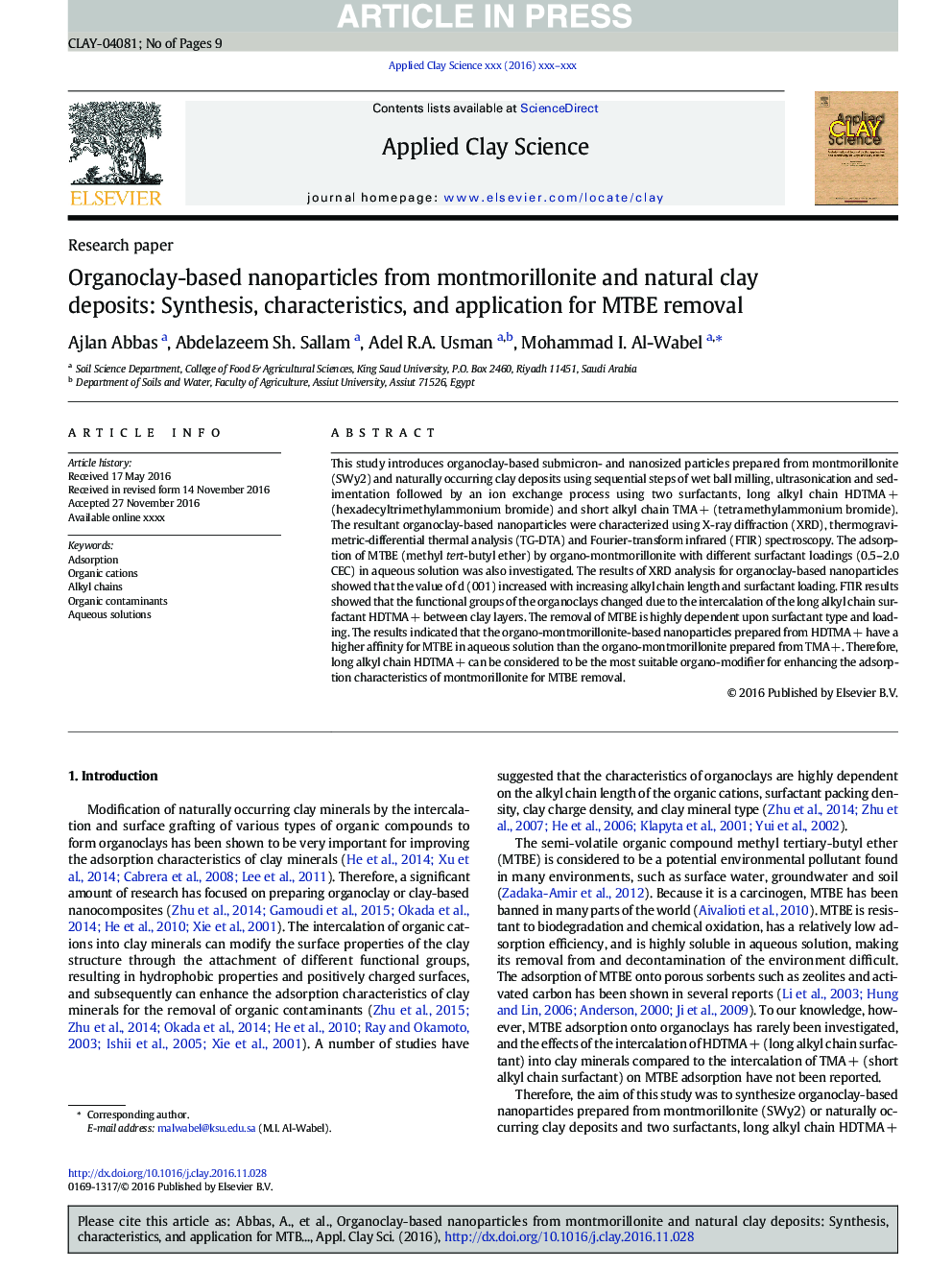| Article ID | Journal | Published Year | Pages | File Type |
|---|---|---|---|---|
| 5468685 | Applied Clay Science | 2017 | 9 Pages |
Abstract
This study introduces organoclay-based submicron- and nanosized particles prepared from montmorillonite (SWy2) and naturally occurring clay deposits using sequential steps of wet ball milling, ultrasonication and sedimentation followed by an ion exchange process using two surfactants, long alkyl chain HDTMAÂ + (hexadecyltrimethylammonium bromide) and short alkyl chain TMAÂ + (tetramethylammonium bromide). The resultant organoclay-based nanoparticles were characterized using X-ray diffraction (XRD), thermogravimetric-differential thermal analysis (TG-DTA) and Fourier-transform infrared (FTIR) spectroscopy. The adsorption of MTBE (methyl tert-butyl ether) by organo-montmorillonite with different surfactant loadings (0.5-2.0 CEC) in aqueous solution was also investigated. The results of XRD analysis for organoclay-based nanoparticles showed that the value of d (001) increased with increasing alkyl chain length and surfactant loading. FTIR results showed that the functional groups of the organoclays changed due to the intercalation of the long alkyl chain surfactant HDTMAÂ + between clay layers. The removal of MTBE is highly dependent upon surfactant type and loading. The results indicated that the organo-montmorillonite-based nanoparticles prepared from HDTMAÂ + have a higher affinity for MTBE in aqueous solution than the organo-montmorillonite prepared from TMAÂ +. Therefore, long alkyl chain HDTMAÂ + can be considered to be the most suitable organo-modifier for enhancing the adsorption characteristics of montmorillonite for MTBE removal.
Related Topics
Physical Sciences and Engineering
Earth and Planetary Sciences
Geochemistry and Petrology
Authors
Ajlan Abbas, Abdelazeem Sh. Sallam, Adel R.A. Usman, Mohammad I. Al-Wabel,
